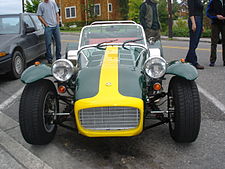
The Lotus Seven is a sports car produced by the British manufacturer Lotus Cars between 1957 and 1972. The Seven is an open-wheel car with two seats and an open top. It was designed by Lotus founder Colin Chapman and has been considered the embodiment of the Lotus philosophy of performance through low weight and simplicity. The original model was highly successful with more than 2,500 cars sold, due to its attraction as a road legal car that could be used for clubman racing.

Cosworth is a British automotive engineering company founded in London in 1958, specialising in high-performance internal combustion engines, powertrain, and electronics for automobile racing (motorsport) and mainstream automotive industries. Cosworth is based in Northampton, England, with facilities in Cottenham, England, Silverstone, England, and Indianapolis, IN, US.

Lotus Group is a British multinational automotive manufacturer of luxury sports cars and electric lifestyle vehicles.

The Lotus Elise is a sports car conceived in early 1994 and released in September 1996 by the British manufacturer Lotus Cars. A two-seater roadster with a rear mid-engine, rear-wheel-drive layout, the Elise has a fibreglass body shell atop its bonded extruded aluminium chassis that provides a rigid platform for the suspension, while keeping weight and production costs to a minimum. It is capable of speeds up to 240 km/h (150 mph). The Elise was named after Elisa Artioli, the granddaughter of Romano Artioli who was chairman of Lotus and Bugatti at the time of the car's launch.
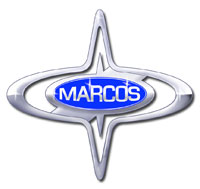
Marcos Engineering was a British sports car manufacturer. The name derives from the surnames of founders Jem Marsh and Frank Costin.

The Caterham 7 is a super-lightweight sports car produced by Caterham Cars in the United Kingdom. It is based on the Lotus Seven, a lightweight sports car sold in kit and factory-built form by Lotus Cars, from 1957 to 1972.

Lotus Elan is the name of two separate ranges of automobiles produced by Lotus Cars. The first series of cars was produced between 1962 and 1975 as a rear-wheel drive vehicle. The second series was produced between 1989 and 1995 as a front-wheel drive vehicle.

The DFV is an internal combustion engine that was originally produced by Cosworth for Formula One motor racing. The name is an abbreviation of Double Four Valve, the engine being a V8 development of the earlier four-cylinder FVA, which had four valves per cylinder.

The Ford Sigma is a small straight-4 automobile engine introduced in 1995 by Ford Motor Company. Its first evolution was sold as the Zetec-S, then Zetec-SE and finally, in later years, renamed Duratec. The last upgrade of the engine is named Duratec Ti-VCT. Conceived for Ford's smaller models, the motor was intended to replace the older HCS and smaller capacity CVH units.
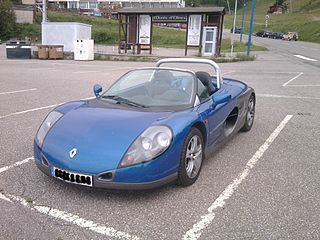
The Renault Sport Spider is a roadster produced by the French automaker Renault Sport, a subsidiary of Renault, between 1996 and 1999.

The Ariel Atom is a road-legal high performance open-wheel car made by the British Ariel Motor Company based in Crewkerne, Somerset, England, and under license in North America by TMI Autotech, Inc. at Virginia International Raceway in Alton, Virginia.

The Lotus Mark VI is the first production car by Lotus Cars. It was introduced by Colin Chapman in 1952 after previously building multiple trials and road racing cars. The heart of the Mark VI is a semi-space frame chassis. Rather than a complete car, it was available to the general public as kit, wherein the customer could install any preferred engine and gearbox, making it eligible for a wider number of formulae.
The World Series Formula V8 3.5, formerly the World Series by Nissan from 1998 to 2004, the Formula Renault 3.5 Series from 2005 to 2015 and the Formula V8 3.5 in 2016 and 2017, was a motor racing series promoted by RPM Racing (1998–2004) and Renault Sport (2005–2015).

The Caterham Seven CSR is the latest model from sports car manufacturer Caterham Cars. The CSR is the most heavily modified Caterham, though it still retains the basic look of the Super Seven. The CSR has two engine options based on the same Duratec block, though modifications and power output differ. The entry level engine produces 200 bhp (149 kW), with a 0–60 mph (0–97 km/h) time of 3.7 seconds. The upgraded engine produces 260 bhp (194 kW), with a 0–60 mph (0–97 km/h) time of 3.1 seconds and a top speed of 155 mph (249 km/h).
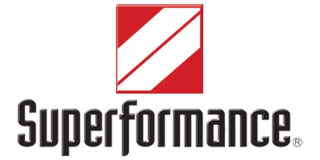
Superformance LLC is an American automobile company that builds, designs, develops, engineers and markets sports cars, related performance components and full replicars. The company was founded as "Superformance International Inc." by Hi-Tech Automotive Ltd. in 1996. Today, Superformance has 15 authorized dealers in the United States and 6 international dealers. SPF cars are sold as "turnkey-minus replacers". In December, 2005 Hi-Tech Automotive transferred the ownership of its subsidiary, Superformance, to American Hillbank Automotive Group, which is a privately owned business of American entrepreneur Lance Stander. Hi-Tech Automotive continue to build Superformance cars at its plant in Port Elizabeth, South Africa.

The TVR Tasmin is a sports car designed by Oliver Winterbottom (coach) and Ian Jones (chassis) for TVR and built in the United Kingdom by that company from 1980 to 1987. It was the first of TVR's "Wedge"-series which formed the basis of its 1980's model range. The Tasmin/280i was available as a 2-seater coupé, as a 2+2 coupé and as a 2-seater convertible.
Caterham Racing is the practice of racing Caterham Seven-type sportscars.
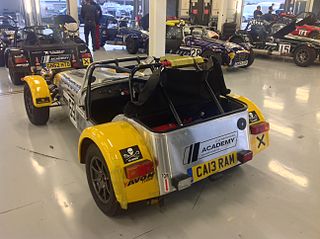
The Caterham Academy is a motor-racing championship exclusively open to novices, as their first foray into motorsport.

The Mazda L-series is a mid-sized inline 4-cylinder gasoline piston engine designed by Mazda as part of their MZR family, ranging in displacement from 1.8 to 2.5 liters. Introduced in 2001, it is the evolution of the cast-iron block F-engine. The L-series is used by Ford as their 1.8L to 2.5L Duratec world engine.
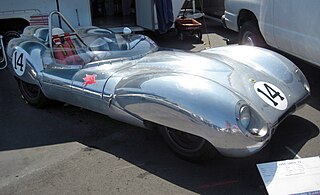
The Lotus 15 is a front-engine sports racing car designed by Colin Chapman of Lotus, built from 1958 until 1960.


